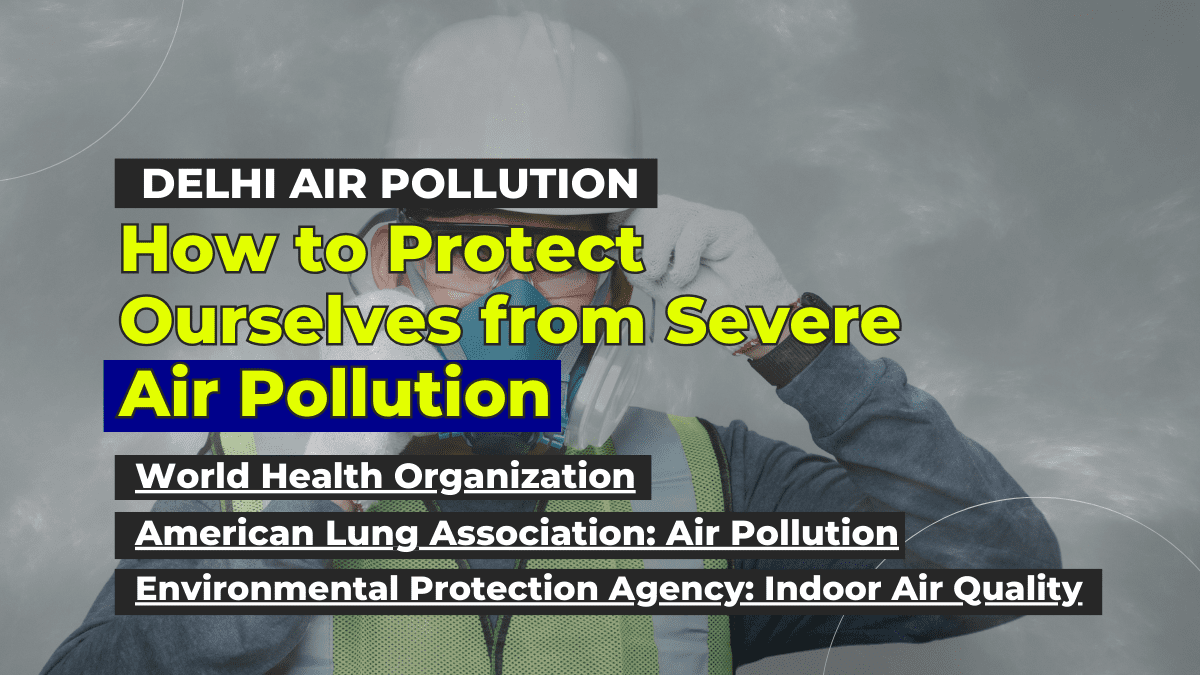Contents
Introduction
Air pollution has become an alarming global issue, affecting not only our environment but also our health and well-being. With the rise in industrialization and urbanization, it is vital to take proactive steps to protect ourselves from the harmful effects of air pollution. In this article, we will explore practical strategies to mitigate the impact of air pollution and safeguard our health.

Understanding Air Pollution
Air pollution is a complex issue caused by various pollutants including particulate matter, toxic gases, and volatile compounds. These contaminants can originate from industrial emissions, vehicle exhaust, household activities, or natural sources like wildfires. Prolonged exposure to air pollution can lead to respiratory problems, heart disease, and other serious health conditions.
Hyderabad Fire -Watch Video- People Rescued Via Window- 6 Dead
The Health Implications
- Air pollution can aggravate existing respiratory conditions such as asthma and bronchitis.
- Long-term exposure to pollutants can increase the risk of cardiovascular diseases and lung cancer.
- Children, the elderly, and those with weakened immune systems are particularly vulnerable to the health implications of air pollution.
Taking Action Indoors
While outdoor air pollution often grabs headlines, it is important to address the air quality inside our homes and workplaces as well. Here are some effective measures to improve indoor air quality:
Regular Ventilation and Air Filters
- Open windows and doors to promote natural ventilation.
- Install high-efficiency particulate air (HEPA) filters to trap airborne pollutants.
- Clean and maintain HVAC systems regularly.
Avoiding Indoor Pollutants
- Use low-VOC (volatile organic compounds) paints, furniture, and cleaning products.
- Keep smoking areas outside to prevent second-hand smoke from accumulating indoors.
- Limit the use of candles, air fresheners, and similar products containing harmful chemicals.
Indoor Plants
- Indoor plants act as natural air purifiers by absorbing pollutants and exhaling oxygen.
- Spider plants, snake plants, and peace lilies are excellent choices for improving indoor air quality.
Staying Protected Outdoors
While it may not always be possible to completely escape outdoor air pollution, there are steps we can take to reduce exposure when venturing outside:
Check Air Quality Index (AQI)
- Stay informed about the AQI in your area through local weather reports or smartphone apps.
- Plan outdoor activities on days when the air quality is relatively better.
Time and Route Planning
- Avoid high-traffic areas during peak pollution hours.
- Consider using less polluted routes for commuting or exercising.
Protective Gear
- When pollution levels are high, wear a properly fitted N95 or N99 mask designed to filter out harmful particles.
- Sunglasses or goggles can also protect your eyes from pollutants and irritants.
Creating Green Spaces
- Support and advocate for the creation of more green spaces in your community.
- Trees and green cover act as natural filters, improving air quality.
Promoting Sustainable Practices
To address the root causes of air pollution, it is crucial to adopt sustainable practices that reduce emissions:
Switch to Clean Energy Sources
- Transition from fossil fuel-based energy to renewable sources like solar or wind power.
- Encourage your local community to invest in sustainable energy alternatives.
Reduce Vehicle Emissions
- Carpool, use public transportation, or consider cycling or walking for short distances.
- Regularly maintain your vehicle to ensure it operates at optimal efficiency.
Support Green Industries
- Choose products and services from companies committed to environmentally friendly practices.
- Support businesses that prioritize sustainable production and reduce emissions.
Conclusion
Air pollution poses a significant threat to our health and environment, but by taking proactive steps, we can protect ourselves and contribute to a cleaner and healthier future. By understanding the sources and effects of air pollution, improving indoor air quality, staying aware of outdoor conditions, and adopting sustainable practices, we can collectively make a difference. Let us strive to breathe in a breath of fresh air and safeguard our well-being.
“The first step towards change is awareness. The second step is acceptance.” – Nathaniel Branden
External Resources:

